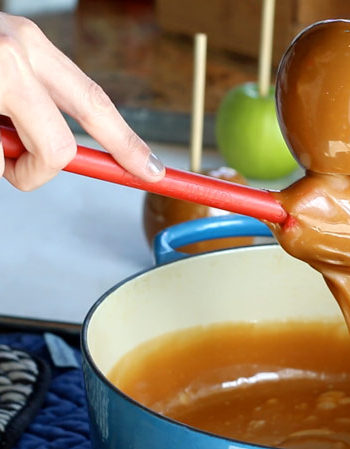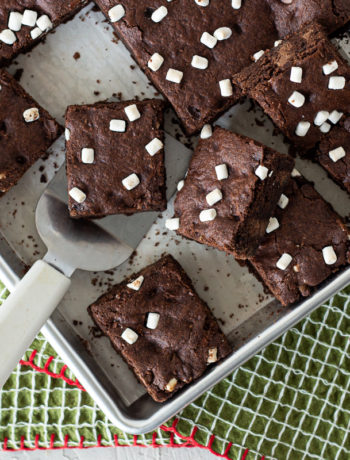A few posts ago, I gave you a Gluten-Free Conversion Chart. Since then, we’ve had a few inquiries about baking with coconut flour because not everyone wants to use starches.
Well, you asked, and we answered! Here’s a helpful chart for baking with coconut flour.


I think coconut flour is a bit confusing, especially in comparison to other ways of baking, so let me explain the chart a bit:
There are 2 ways to use coconut flour:
1. Use it straight all by itself
2. Use it mixed with another grain.
When you use it by itself, you will use a lot less of it than wheat flour: If a recipe calls for 1 cup of wheat flour, use only 1/3 cup coconut flour, plus enough eggs as a binder and liquid to keep the consistency of the batter or dough normal.
When you use it in a mix: If a recipe calls for 2 cups of flour, you can divide that by whatever you’d like. For the sake of this example, we’ll divide it in half. Add 1 cup of another grains flour, then the rest in coconut flour to equal what the recipe originally called for (2 cups), so 1 cup of coconut flour. When you do this, be sure to increase your liquid by the same amount as the coconut flour (in this case, 1 cup).
You will still need to be aware of binding and how well the batter or dough holds together. Use eggs, liquid sweeteners, flax seeds or xantham gum to bind.
Here’s a few things that you should know about Coconut Flour:
- Coconut flour is gluten free.
- Coconut flour is high in fiber.
- You can bake with straight coconut flour or a mix of coconut flour plus another grain.
- Whether you mix it or use it straight, coconut flour is thirsty. You will need to add plenty of liquid. The best way to do this is to watch the consistency of the batter or dough. If you think it needs more liquid, add it.
- Baked goods made of coconut flour tend to fall apart. You will have to bind them well. Products that help bind are: eggs, liquid sweeteners and flax seeds.
- If you choose to use eggs as a binding agent, a good rule of thumb to follow is 1 egg to every ounce of coconut flour used. (We realize this is a lot of eggs! There are 8 ounces in 1 cup, and most people use 6 eggs per cup of coconut flour).
- Another alternative to using eggs is flax seeds. 1 tablespoon of flax seeds soaked in 3 tablespoons water will replace 1 egg.
- Coconut flour is pretty clumpy. You’ll want to be sure that it is mixed in well. The best way to do so is to mix it in with all of the wet ingredients until it has been blended well.
- Watch your baking time! It will be less. When a wheat flour recipe takes 30-50 minutes to bake, a coconut flour recipe will only take 18-20 minutes.
- It is all about trial and error: You will have to see what works best for you.
Here’s a few questions that have been asked about coconut flour: (If you have a question, please feel free to ask. We are here to help).
- Is coconut flour gluten free?
- Yes.
- Can you taste the coconut flavor in your baking?
- Most people can’t.
- Do I have to use all of those eggs?
- Yes, unless you would like to use flax seeds as an egg replacement.
- Can I mix coconut flour with rice flour?
- Yes, you can. As of now, we don’t have a conversion chart for that, but you can always experiment.
Do you bake with coconut flour? Do you have anything to add?



Daphne M Brown
August 5, 2020 at 3:26 pmThe link to access the coconut conversion chart doesn’t seem to be working correctly. It just takes me back to the store website. Hopefully this will be fixed soon.
Munk
November 12, 2016 at 9:42 pmI tried making ginger snap cookies with coconut flour. The cookies turned out to be a ginger cake. I did your suggested volume of eggs. However I did replace some of the eggs with the flaxseed. The cake actually was very tasty and the flaxseed added a nice texture. I did want cookies though. What happen?
Gabrielle Aiston
November 11, 2016 at 12:05 amCoconut flour is gluten-free, wheat-free, and high in nutrition. It contains vitamin C and has traces of other important vitamins and minerals. Also, it is naturally high in protein, fiber, and beneficial fats. Coconut flour contains 5 grams of fiber per tablespoon compared to only 0.8 grams found in whole-wheat flour. Because of the high-fiber content, substituting it for even some of the wheat flour in your diet can lower your glycemic index and help maintain healthy blood sugar levels. Baked goods made from coconut flour are more satisfying, making it perfect for anyone who is trying to reduce their calorie intake.
All About Substitutes: 15 Healthy Bread, Pasta, & Baked Good Swaps | Uncategorized | Sex Scalp Massage
September 12, 2014 at 12:06 am[…] flour. This is my favorite one to use. And here is a delightfully useful conversion […]
Abbye
November 14, 2012 at 10:37 pmCan applesauce be substituted for some of the eggs or flax seed in baking with coconut flour?
Cait
November 16, 2012 at 10:40 amAbbye, I have done that… but only in a few recipes. The key is the consistency of the batter. It will definitely be a trial and error process! Good luck!
KT
October 27, 2012 at 11:04 pmWhat about other nut meal or flours I’m having a hard time baking and substituting almond meal for wheat flour since it’s so heavy. would it be better to weigh it than measure it by volume?
Cait
October 30, 2012 at 10:43 amThat is something you can try. When it comes to cooking with other flours I always try to watch the consistency of the batter or dough. If it looks like you need to add more to keep the needed consistency, then do so.
Lindsey
October 15, 2012 at 5:34 pmCan coconut flour be used for long term storage? If so, what is the shelf life?
Cait
October 16, 2012 at 1:40 pmIf it is stored in an air-tight container, in a cool dark place, it will stay good for about 1 year. If it’s stored at room temperature, the time is about half that. So if you are using it quite a bit, then you can get away with storing it.
Recipe: Coconut Flour Chocolate Cake
August 15, 2012 at 7:03 am[…] I posted a chart to help you better understand coconut flour, I’ve had a slew of requests for coconut flour […]
Recipe: Coconut Flour Bread
August 10, 2012 at 7:02 am[…] we taught you a little bit about how to understand coconut flour. Today, thanks to Jenny from Nourished Kitchen, we are sharing a delicious gluten-free bread recipe […]